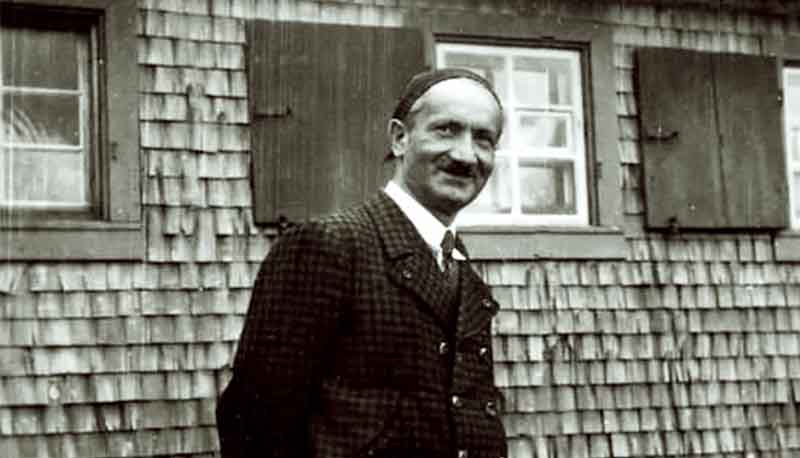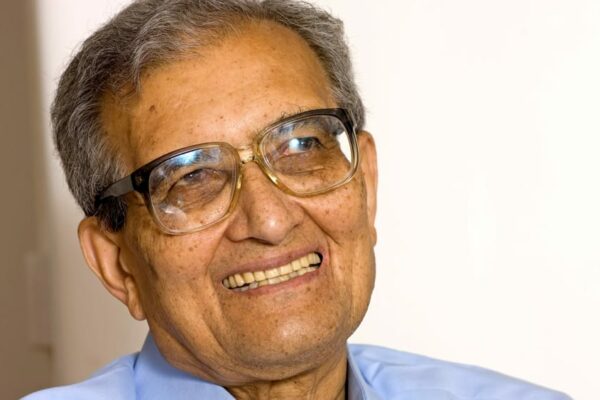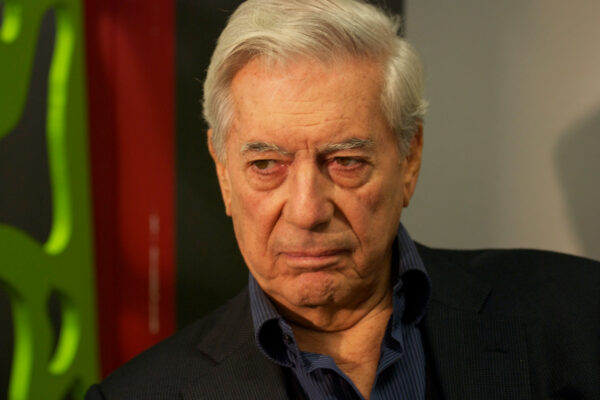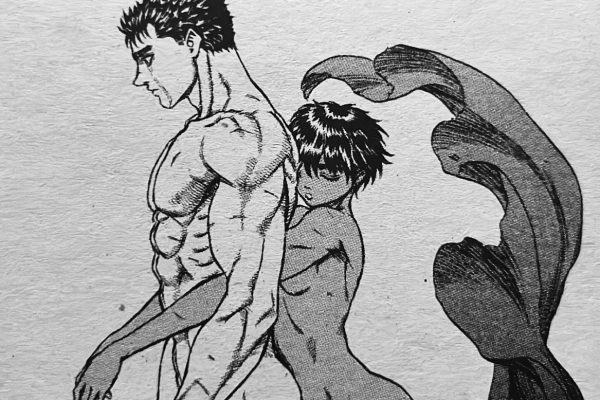Taking care as caresses the absence between me and the Other
Before letting you read the paper, we wanted – me, the author, and the translator – clarify the methodology we perceived when we had to translate such an article from Italian to English; the structure of this work, as you are going to see, is a lot relying – as you would expect when interfacing a paper about Heideggerian philosophy – on the way that the citations and, even more, words were utilized and translated by the original translator in Italian of the Heideggerian work Being and time, Franco Volpi. It is not even to say that the entire purpose of the Heideggerian theory is founded upon a way of intending language that immerses in it, taking out meanings and, generally speaking semantics of the reality that we would never expect if facing terms as they superficially present themselves – especially if being as such is enclosed in the language itself. Because of this, this entire work, on its original language, started and continued its thesis by following the strict signification that was given to the Heideggerian lexicology by F. Volpi; that is to say, so, that when we faced the challenge of a translation, we had to choose between two possibilities: to research and to report the specific citations from the editorial editions that are generally commonly findable in UK, or to translate ourselves the Volpi’s translation in order to maintain the original sense that was given to the entire work. As you will guess, the most convenient choice in order to maintain the harmony of the work in its arguments was the second one – the one we picked up. Said this, all the citations are bibliographically located on the Italian versions but, of course, they all have got their translations that maintained their sense and, with this, the entire basically meaning of the work we are just presenting to you.
That said, we hope you can appreciate the effort that was putted in this translation, and be able to understand coherently what was wanted to be communicated.
————————————————————————————————————————————————
Speaking of the dynamic vacuum in Heideggerian philosophy is equivalent to uncovering Pandora’s box: just as in Hesiod[1] this would represent, if opened, the raging in the world of evil in its most tragic and sinful wholeness, but it would still lead man to be authentic as composed of both joy and sadness, equally in Heidegger, opening him and bringing out the emptiness would imply that the «absence» founds the authentic wholeness of being. If the void should have been repudiated and even abhorred, for a certain typically Hellenic philosophical approach[2], in Heidegger it is precisely the latter that make us realize reality in its most shining and truthful image – what a retaliation!
The great problem of Heideggerian philosophy is in fact to recontextualize the sense of being in the perspective of a West which, according to Heidegger, was continually confusing its essence, merging it with the entity: as a matter of fact, there was no ontological difference and speaking about entity was becoming synonymous with speaking of the being as such. For Heidegger, this is absolutely inadmissible: it is necessary that the two are repositioned and reviewed through an analysis that makes them evident, clear and, above all, distinct. Therefore, with the most theoretical of the savoury aftertaste that could have been given to a philosophical speculation, in Sein und Zeit [3](1927) – the work unanimously seen as crucial of Heideggerian thought, this is what is attempted. The result is a mammoth work which, thanks to a tight phrasing and a hysterically prudent lexicology, will rethink about being as such and, in this way, will contextualize within a clearly defined perimeter what is the existential condition of man. It then becomes almost indexical, compared to the same structural coherence of the Heideggerian theoretical system, to highlight how the work we are considering is inconclusive: as with Heidegger, the being could only be understood through absence, so his work is, as lacking in a part (a conspicuous part, I would say), on the one hand aesthetically harmonious with the thought it would like to express, and on the other, more theoretical, by coming to light in the clearest way because what is lacking takes on more relevance, vigour and presence.
When for the first time in Being and time we talk about human and its importance is highlighted within the discourse on being, what is first clarified – in a completely Humean way[4], is that every science, before being a science describing a given phenomenon, speaks of man himself. In other words, whether it is humanistic or conventionally scientific, every cognitive approach to the world, before talking about the latter – assuming it can talk about it! –, speaks of man: “As human behaviour, the sciences have the way of being of this entity (man)” (M. Heidegger, Sein und Zeit / Being and Time, trans. It. Edited by Franco Volpi, Longanesi, Milan, 1971, p. 24).
Even more strongly and convincingly towards the ontologically central positioning of man compared to a reasonable unveiling of the truth of being, it is said that the latter, man, is Dasein in his particular way of being-in-the-world – understood both in the purely existential sense and in that more merely inherent in his awareness of the world itself; in other words, man is the place where being takes place. We could venture two possible interpretations – I believe equivalently correct in their relevance to the framework of Heideggerian thought: man is being-in-the-world as meaning that he is Dasein, but he is also the one who, in the world, bears the possibility of being able to grasp being as such in the most truthful and coherent way. Therefore, the true and only possible ontology that can understand the being will be the «existential analytic» – an analysis whose study focuses on the existence of man which ultimately leads to the emergence of being as such. In fact, Heidegger argues that the Dasein understands itself on the basis of its existence and that “[…]therefore the fundamental ontology, from which all the others can arise, should be sought in the existential analytic of Dasein”[5].
In view of these considerations, we can understand being-as-such and man as ontically being so much tangent and interconnected – or even inextricably coincident, despite maintaining a substantial separation – that the study on one leads to the unveiling of the other: the analytic of existence whose object is man in his «existentiality» leads finally to the being and, inversely, once the being is understood, we can ontologically descend to the understanding of Dasein[6]. Proceeding in his arguments – and increasingly destroying modern ontology and the others deriving therefrom, Heidegger will finally come to admit that being can only be authentically understood in its absence: where there is absence, there is the ontological perception of that “something” which, removed, places the overpowering absence in itself and which, precisely because of this absence, becomes present. In other words, the being, elusive and apparently not catchable through a particular conceptualization, has always been captured and indeed, it is always in the Dasein and, again, the more it has seemed or seems not to be there, the more it affirms itself in its presence: just when something is removed, its presence lights up.
And that is how, Heideggerianly, an inalienable necessity of absence and emptiness is affirmed: this, in fact, would establish the ontological condition of possibility for the authentic comprehension of the being itself. In more existentialist terms (and in Heidegger the existentialist matrix borders on identity with the more speculative-theoretical one), man needs to see himself in death; he needs to identify himself as Being-toward-death in order to authentically live and understand himself. In fact, “dying is not a simple event, but a phenomenon that should be understood existentially […]” (ibid, p.289): understood existentially insofar as the occurrence of death is inherent in the ontic constitution of Dasein – and it inherently concerns its position as an entity. Man is a being-toward-death and, when he realizes this by experiencing life in the most serious and conscious way – Heideggerianly expressing himself temporally in the «projectualism», he is in an existential condition of «authentic life»: a life which, shall we say, sees its foundation in that lifelessness which is death and, precisely because of that, that empty-full-of-removed is self-clarified.
Another essential stronghold of the Heideggerian theoretical structure is represented by the «Care» which will finally allow us to arrive at the main topic of this work. In order to talk better about the Care, it is firstly necessary to understand how Heidegger certainly does not leave open the problem of the co-existence of the Others compared to our being-in-the-world: those who share the world with us, in fact, would be the Heideggerian «Being-with»[7] and the relationship that each Dasein can entertain with the other should be strictly regulated to the extent of looking-after. The world is the field where the actions of the Beings take place and, as a world, it is also mutant, variable. It is the world whose things are transient, modifiable and alterable; it is the world where it is necessary – if one lives genuinely and respectfully towards it – to take care of the things as things themselves and as Being-with. About things, Heidegger uses the expression take-care, meanwhile about Being-with, as we said, the expression look-after[8]. It is of singular and significant importance, inter alia, how the theme of Care is argued, towards things-in-the-world and Being-with, after an in-depth study in regard to the experience of angst – status so dear to the philosophy of the twentieth century and specifically to the existentialist one: in this way Heidegger wants to highlight that, for an individual to look after of the other, it is first necessary for him to experience angst – which is the experience of the world-as-such (as described by Heidegger)[9]. In other words, angst is that “fundamental emotional situation” in which the Dasein lives in a condition of complete separation from that living and becoming world, including the aforementioned Being-with. In other terms, it is the warning of the world as a bare world, as a dry, insipid, raw world and in a certain sense as a stripped world, depleted of its most authentic meaning: the world is, thus conceived – devitalized and perceived in a grey, vacuous, suffused way, insignificant for the Being that experiences anguish[10]. The Being is not and should not feel alone, although it is certainly finitely one in itself.
Once experienced the nothingness of angst, the Dasein is now ready for a contact that is genuinely undertaken with the Other – a contact that starts from the Care. This is presented to us under the theoretical-linguistic guise of «being-near»[11]: Dasein, in fact, has the characteristic of always being ahead-of-itself. In other words, the existential extension of the individual is included within his placement in a moment that is always leaning forward – both in a chronological and an ontological sense concerning his encounter with things and the Other. The concept is clarified by Heidegger himself, who in fact summarizes it as a “[…] being-ahead-of-itself-already-in a world as being-near (the entity that meets inside the world)”[12].
Certainly in Heideggerian philosophy, looking-after is important for purely ontological questions[13], and yet in its practicality inside the field of daily life it is expressed through a healthy and respectful relationship with the Other, the Being-with: this, in fact, would contribute – just like us – to the authentication of his own life and with this, to the unveiling of the meaning of being as such. Therefore, sharing one another in the existence of the other, it is necessary that the Care refines unequivocally the framework of complex social relationships (and also ontological-existential, in this case). In other words, looking-after the Other is a mission that Heideggerianly takes place inside the field of the sense of being. Looking-after the Other is meaningful, as a matter, only if it develops within a channel of interpersonal relationships whose main basis is the ontological respect: me walking in the world, I am not alone and, as not alone, the Other is my onerous but respectable task; a task that Dostoevsky himself, in The Karamazov Brothers, highlights with unparalleled delicacy and also sweetness: “[…] even if your light shines and you see that men are not saved by it, you hold on anyway and do not doubt the power of the celestial light; have faith that, even if they are not saved now, they will be saved in the future […]. All that is right goes away, but his light remains”[14]. The Dostoevsky light shines thanks to my respect for the Other by the mere fact that he exists and, by existing, enters into a relationship with me: in the Dostoevsky Weltanschauung, the sense of the world as world is moralizing through the all-comprehensive love[15], while, in the Heideggerian one, it is ontologizing through the fact that every Being, in his being-in-the-world, does not invade the other in his path, in his project.
It is precisely around this «invasion» that we would outline the main topic of this work: the term, etymologically, derives from the Latin invadĕre (compl. of in- e vadĕre, “to go”)[16]; in other words, the most correct meaning of the lemma refers to «going-inside», to the penetration of something into something else. As we said, each individual, each Dasein is on the way: he is ahead-of-himself, coercively and necessarily; there is no stopped and static individuality stuck in a place, in a given time. As stated by Sartre, man is condemned to freedom[17]: he suffers and he is anguished from it and, lastly, he tries in every way to fill an ontological gap which, in itself, is what inevitably creates him in his own attitude; as if to say: this lack that pushes you out, by looking for a missing unknown and unknowable, nebulous and secret, absent but yet disruptive present, even if it is anathema – a damnation, it is also what makes you ontologically man. Thus, every man is called upon to choose, is called to get involved and to become himself[18]: even the most apparently irrelevant of choices, even the most ephemeral of decisions, is a way-of-being of the man who, unfortunately or fortunately, has freely decided. Nevertheless, the decision that is thrown outside itself in a cohabited world is inevitably a decision which affects others, which etymologically touches them[19], which, therefore, can both caress them and slap them, making them both suffering and joyful, sad and happy, dead or alive. The call for the authentic being towards the project – in Heidegger –, or towards the choice that determines the Ego (Kierkegaardianly), has a far more important characteristic: to have the Other as a price.
The ontologically ethical activity towards the Other and its positioning as Being-with is all focused here: just as authenticity is returned to the Dasein through the experience of the presence in the absence (existentially, of death), so much should be said about its relationship with the Other. The authenticity of the relationship (which is based on the existence of the others) is something to give in the concern for that absence which separates the ontological constitution of every single Being-with. The basis of a consolidated relationship that is delineated within a good sense that respects the Other, goes through the Care of that emptiness, of that absence which makes my individuality unique and separate from that of the Other: there is an unequivocal, unobjectionable and inalienable gap which describes my person and that of the Other. Even putting ourselves side by side as much as possible, me and the Other will not merge or dissolve into each other: me and the Other will remain; despite being combined – even grammatically, it is separation what paradoxically gives us the possibility of being close, companions and Being-with. The conjunction “and”, in fact, brings closer and further away, separates but makes adjacent, and yet, all that makes being-combined possible is precisely that separation itself, that emptiness, that absence which delineates every individuality within its own absolute ordered constitution. The only possibility given to the Dasein in order to invade the existential individuality of others is in its very existence: existing, I dynamically and spasmodically become. By becoming, inevitably – being existence a thread whose ends are always connected to other threads, creating an inextricable knot of interconnected individualities[20], I carry the Other with me and, if I do not worry about him, I do not take care for him, I can limit himself, force him and existentially, or worse ontologically, suppress him. The healthy relationship is an expression of absence and emptiness, it is its most noble and blinding manifestation, its most elegant and refined explanation; it is how much that emptiness caresses it and takes care of it, leaving it there. Looking-after the Other is looking-after of the absence that mediates between our constitutions and which makes us inter-personally approachable, joinable and dialoguing. From this emptiness, from this absence – which should be seen not as an aberrant abyss but as a territory of possibility, otherness emerges in its most unconditional form, of which it is possible not only to take care of it and respect it, but also to love it.
* Dottoressa in Lingue e Culture Straniere presso l’Università degli Studi di Bari “Aldo Moro”, attualmente sta perfezionando i propri studi presso l’Università degli Studi di Roma “La Sapienza”; tra le altre cose, si è occupata della traduzione del documentario “Libertà” prodotto da Cooperativa Quarantadue (https://video.sky.it/cinema/trailer/video/liberta-trailer-video-685124).
* Doctor in Foreign Languages and Cultures at the University of Bari “Aldo Moro”, is currently perfecting her studies at the University of Rome “La Sapienza”; among other things, she dealt with the translation of the documentary “Libertà” produced by Cooperativa Quarantadue ( https://video.sky.it/cinema/trailer/video/liberta-trailer-video-685124).
Traduzione in Inglese a cura di Maria Rosanna Chiaromonte* Versione italiana
English translation edited by Maria Rosanna Chiaromonte*
Notes from the translator and the author
Nato nel 2001, attualmente studente presso la facoltà di Filosofia dell’Università degli Studi di Bari “Aldo Moro”; si è occupato già di Filosofia presso numerose riviste e blog. Spiccano, tra le varie, le collaborazioni con “Gazzetta Filosofica”, “Filosofia in Movimento”, “Ereticamente — Sapienza” e “Pensiero Filosofico”. È stato membro della redazione della rivista “Intellettuale Dissidente”; ivi, si è occupato dell’etichetta “Filosofia”. Ha anche pubblicato per il blog “Sentieri della Ragione” e, sulla sua pagina Facebook (“Sentieri della Filosofia”), è stato relatore, con la direttrice, di due webinar aventi riscosso soddisfacente successo. Saltuariamente, pubblica i suoi contributi sulla piattaforma accademica “Academia.edu”; qui, questi hanno ricevuto — in totale — quasi una decina di migliaia di letture. Ha collaborato con l’editorial board di “Pillole di Ottimismo”, dando, della complessa e poliedrica questione pandemica, una contestualizzazione filosofica. Ha tenuto convegni di Filosofia locali presso la sua città d’origine, Bitonto — in collaborazione con la testata giornalistica del luogo, dal titolo “La Persistenza Filosofica”. Occasionalmente, pubblica anche per il blog di psicologia Italiano, “Psiche.org”. È stato membro della redazione, occupato nell’etichetta “Filosofia”, della rivista — ormai inattiva, “nuovoumanesimo.eu”. Infine, è stato chiamato a presentare un lavoro sul testo “Mobilitazione Totale” di M. Ferraris in occasione dell’evento “Summer School di Filosofia Teoretica” (2019) intitolantesi “Pensare il Futuro/Pensare al Futuro” tenutosi in Bitonto — al quale dibattito (oltre alla presenza dell’autore) ha partecipato il filosofo B. Stiegler.



